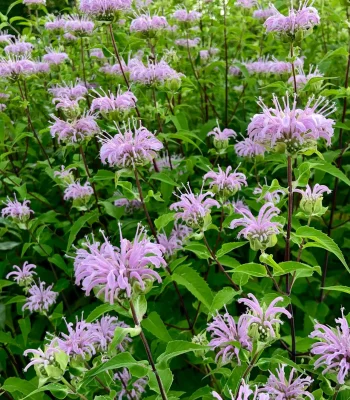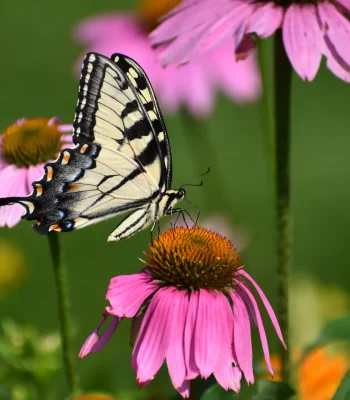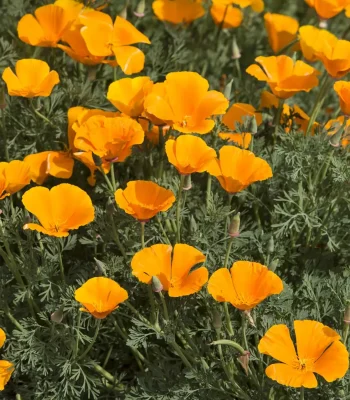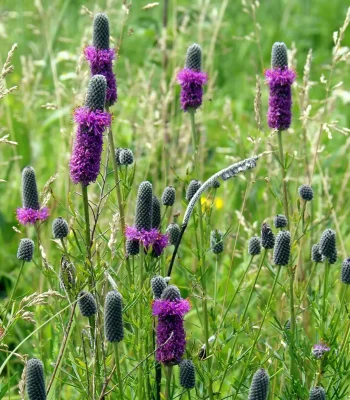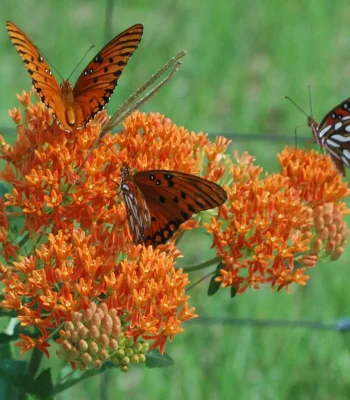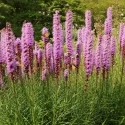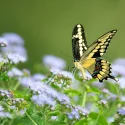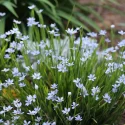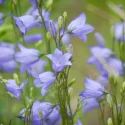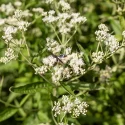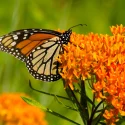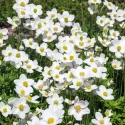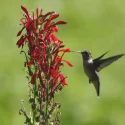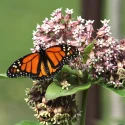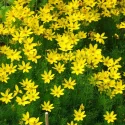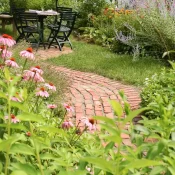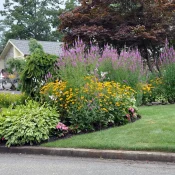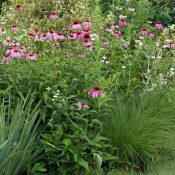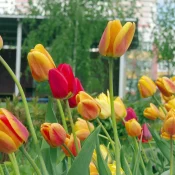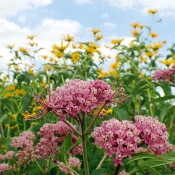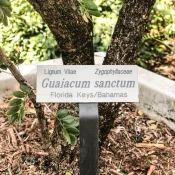What are some native plants that are easy to grow from seed?
Want to grow native plants on a budget? Start with seeds.
While many native plants need special conditions to sprout, some are just as easy to grow as the seeds you’ll find at the hardware store. These five species germinate quickly, require little fuss, and will bring pollinators flocking to your yard. Scroll on to meet some fuss-free gems.
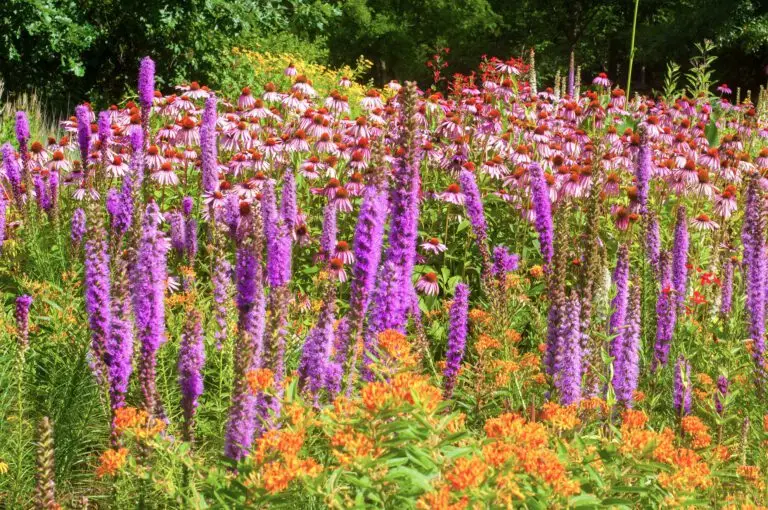
If you want to get some native plants started in your yard or neighborhood, by far the cheapest way to do that is by growing them from seeds.
You should be able to buy some and toss them in some dirt, right?
Here’s the problem: If you go to the garden or hardware store and look at the packets of flower seeds for sale, most of them aren’t native.
Why?
It’s because those flowers have been specially selected because they’re unusually easy to start from seed, and then they’ve usually been further altered over generations by humans who want bigger, brighter, longer-lasting flowers.
Native seeds give gardeners a big advantage
Native plants, on the other hand, have to survive on their own in the wild. They aren’t guaranteed their seeds will land in a nice spot with good soil, plenty of sunlight, and a gardener watering them when it’s dry.
This means many native seeds have special tricks to make sure they sprout in the right conditions to give themselves the best chance of successfully growing up into a plant. They don’t want to accidentally sprout under three feet of snow or in the hottest, driest part of summer. All of this means that many native plant seeds need specific conditions for them to sprout.
But there are exceptions! These five native species are as easy to sprout as any seeds you’ll find at the hardware store. And as a bonus, you’ll be creating a haven for native pollinators, birds, and animals.
5 native plants that are easy to grow from seed
Bee Balms
Monarda genus
If you live in almost any state in the U.S.*, there is a bee balm native to your area—and it’s easy to start from seed. Bees and butterflies go absolutely wild over the flowers, and the foliage has a pleasant smell (it’s actually in the mint family, so some people make tea from it, too).
Bee balm blooms between July and September and most species grow three to four feet tall.
*Exceptions: California, Florida, and Hawaii. Good thing you have other good things going for you!
Purple Coneflower
Echinacea Purpurea
Purple Coneflowers are iconic native wildflowers that bloom from July to September. They are native everywhere in the eastern U.S., and bees and butterflies love them. For bonus points, find seeds that come from plants that were originally collected in the wild near you.
Depending on how much sun your spot has, Purple Coneflowers will grow anywhere from two to four feet tall and come back year after year.
California Poppy
Eschscholzia californica
If you live in the West, try growing these gorgeous orange-yellow cups. They are extremely drought-tolerant and will re-seed themselves if they’re happy (their seed pods can pop open and fling seeds several feet away!)
Many pollinators visit the flowers, which can bloom anytime of year from February to August.
If you live in the eastern U.S. there is another native poppy for you: the Celandine Poppy.
Purple Prairie Clover
Dalea purpurea
Purple Prairie Clover has delicate leaves and pretty purple flowers from mid to late summer. It is native to a huge swath of the middle U.S. and Canada, and offers high-quality nectar for pollinators, especially native bee species—many of which are threatened.
Purple Prairie Clover grows about two feet tall and will return year after year.
Butterfly Weed
Asclepias tuberosa
When we say easy, we mean it. We once handed a $2 packet of Butterfly Weed seeds to a 4-year-old, showed him how to poke a finger in the dirt, drop in a seed, and walk away. By summer’s end, Butterfly Weed was in bloom.
Drought-tolerant and compact, it’s perfect for borders—and even better for Monarchs, who rely on it as a host plant.
How do I plant native seeds?
Choose a spot and remove other plants or weeds. These five plants all like sun, so make sure the spot gets at least a couple of hours of direct sunlight every day.
For all these seeds, the process is the same:
- Water the ground to give your little seeds a head start.
- Make a hole ¼ inch deep.
- Sprinkle in seeds, press them into the dirt, cover with a light sprinkling of wet dirt, and press again.
- Don’t forget to put a popsicle stick or other marker so you can find where you planted them!
The seeds should sprout within 3-14 days. After they’ve sprouted, if you can water the little seedlings a few times, especially if there’s a dry spell, they’ll be even more likely to succeed. After their first year, they usually do fine without extra watering.
For more tips, check out How to Start a Native Garden.
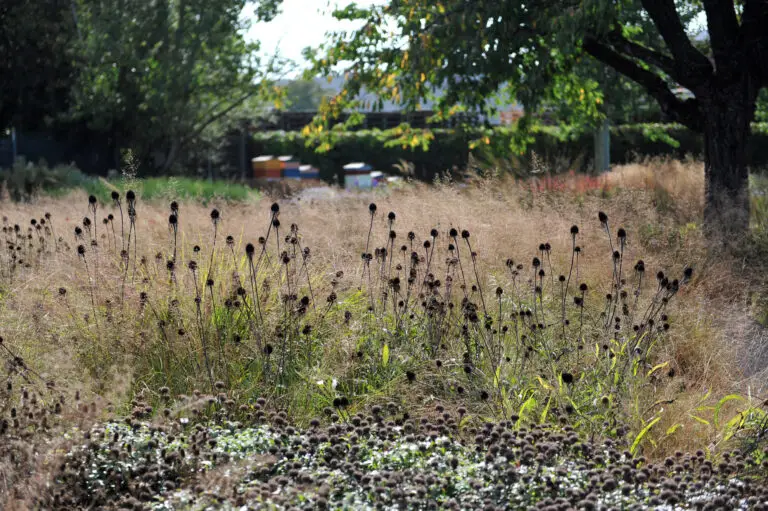
How do I find native plant seeds?
For seeds, looking online is usually your easiest bet.
- We have an easy guide to finding seeds online for your area.
- You can also check out local plant nurseries.
- Or visit plant swaps and plant sales, often held in the spring and fall.
When should I plant native seeds?
To give your seeds the best chance, plant them in the spring when they’re most likely to get rain and lots of time to grow and establish their roots before fall.
Secret planting season: the fall
You can also plant seeds in the ground in the fall or winter and they will come up when they’re ready in spring.
What about starting seeds in the summer?
If it’s already in the heat of summer, you can also start seeds indoors in pots and set the new plants in the ground in the fall. That gives them some time in cooler temperatures, which are less stressful for seedlings than summer heat; they’ll grow roots, let their leaves fall over winter, and be ready to burst into action next spring.
Go forth and plant seeds! If you’re hungry for more, check out our regional guides for the Northeast, Mid-Atlantic, Midwest, or South to find some stellar pairings for your area. Happy planting!
Sources
- Branhagen, Alan. Native Plants of the Midwest: A Comprehensive Guide to the Best 500 Species for the Garden. (2016).
- California Native Plant Society. “California Poppy, Eschscholzia californica.” Calscape, accessed Feb. 10, 2025.
- Nelson, Julie Kierstead. “California Poppy (Eschscholzia californica).” U.S. Department of Agriculture Forest Service, accessed Feb. 10, 2025.
